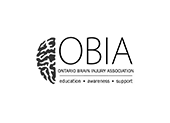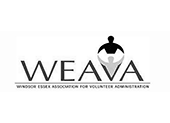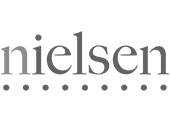If you're sending mixed messages, you may be harming relationships. Our self-awareness skills are essential when communicating and expressing our feelings, emotions, and intentions.
Lost in Translation: Unraveling the Mystery of Mixed Messages
Communicating with purpose is pivotal to all relationships. What we say and do are the brushstrokes that paint the canvas of our intentions. Yet, in this complicated masterpiece, a curious phenomenon often arises - mixed messages. They're the subtle contradictions between our words and actions, the unspoken narratives that echo louder than any verbal statement. In our blog, we explore the profound effects of unclear communication, dissect the underlying causes, and unveil the solutions to ensure that your true message shines through the ambiguity of mixed signals.

How Often Do You Send Mixed Messages?
Do you ever send mixed messages? Sending mixed messages happens more often than you might think. You can avoid this communication nightmare by aligning your body language, including facial expressions, emotions, voice tone, and feelings. Each of these modes plays a key role when communicating with others. When interacting with others, many aren’t conscious of what we’re projecting to the world. It’s easy to send mixed messages unless we're very self-aware.
As The Old Saying Goes – Actions Speak Louder Than Words!
Self-awareness skills are instrumental when communicating and expressing our feelings. Our emotion plays a vital role in all we do. Those around us will understand our feelings and emotions through facial expressions and body language. People often trust what they see more than they hear, which can develop mixed messages when communicating.
Imagine receiving a call informing you that you were unsuccessful shortly after interviewing for an internal position. You immediately attempt to come to terms with your feeling of disappointment. As you process your emotions, the manager floods you with feedback about what a good candidate you were and how well you interviewed. This situation is a prime example of communicating a mixed message! This insincerity is very hurtful and sends mixed messages and confusing emotions. There are numerous occasions where employing honesty is the best practice to facilitate clarity and sensitivity in our communication with others.
Strategies To Avoid Sending Mixed Messages
Avoiding mixed messages in communication is essential for clear and effective interaction. Here are some strategies to help you achieve this:
- Be Clear and Specific: State your message concisely and directly to convey your thoughts and intentions.
- Stay Consistent: Ensure that your verbal and non-verbal communication align. Your words, tone of voice, facial expressions, and body language should all convey the same message.
- Active Listening: Pay close attention to what others are saying. Show that you're listening by nodding or using verbal cues like "I understand" or "Go on." This helps prevent misunderstandings.
- Ask for Feedback: Encourage others to ask questions or provide feedback if unsure about your message. This action allows you to clarify any misunderstandings.
- Use Examples: Provide examples or anecdotes to illustrate your points, making your message more relatable and understandable.
- Avoid Jargon: Minimize the use of technical terms or jargon unless you're sure your audience understands them. Using unfamiliar terminology can lead to confusion.
- Check for Assumptions: Avoid assuming others share your knowledge or perspective. Check if your message might require additional context or explanation.
- Manage Emotions: Emotions can cloud communication. If you're upset or emotional, take a moment to calm down before addressing the issue to prevent mixed messages.
- Be Mindful of Timing: Consider the timing of your communication. Choose appropriate moments to discuss sensitive topics or deliver important messages.
- Follow-up: After a conversation, follow up with a summary email or message to confirm the key points discussed. This can help ensure everyone is on the same page.
- Use Visual Aids: In presentations or complex discussions, visual aids like charts or slides can enhance understanding and reduce the chance of mixed messages.
- Practice Empathy: Try to understand the perspective of the other person and tailor your communication to their needs and preferences.
- Pause and Think: Take a moment to gather your thoughts before responding, especially in challenging or high-stakes conversations.
- Avoid Multitasking: When communicating, give your full attention to the conversation. Multitasking can lead to misunderstandings and mixed messages.
- Seek Clarification: If you're unsure about someone else's message, don't hesitate to ask for clarification. It's better to seek clarity than make assumptions.
- Be Open to Feedback: Encourage others to provide feedback on your communication style. Constructive criticism can help you improve.
Remember that effective communication is a skill that can be developed over time. By implementing these strategies, you can reduce the likelihood of sending mixed messages and enhance your ability to clearly convey your thoughts and ideas.
How to Develop Clear Communication
If this is a skill you want to develop, I recommend you focus on how your voice tone and body language reflect the emotions you are attempting to project over two weeks. It becomes easier as you become more aware of your feelings and emotions. The next time you respond to someone and your body language or voice sends different signals, you need to adjust these mixed messages to match the reality of your feelings. This skill becomes easier as you become more aware of your feelings and emotions. If it’s appropriate, be authentic and share this information with the person you’re interacting with.
The ability to self-correct your mixed messages in real time will enhance your self-awareness skills when communicating with others. Remember that people trust what they see more than what they hear. Marshall Connects offers Emotional Intelligence Assessments and Coaching to enhance skill development in all areas, including self-awareness strategies to strengthen your focus to improve overall productivity. I discuss this and the importance of aspects of communication in my book The Power of Emotion.
This article was originally published on March 3, 2018, and has been updated (September 2023).
More Motivational Reads Here »
How Emotionally Intelligent Are You?
Sign up for Linda’s monthly tips to build your Emotional Intelligence and reduce Emotional Hijacking!

















